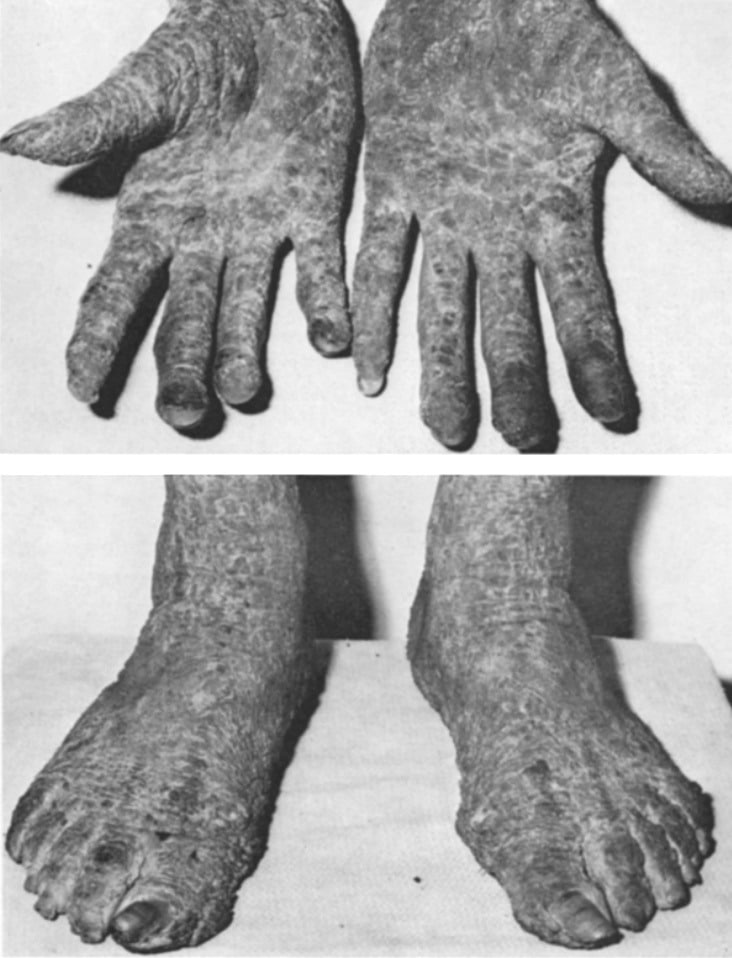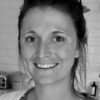Madge Macklin
Madge Thurlow Macklin (1893 – 1962) was an American medical geneticist.
Macklin made a fundamental contribution to statistical analysis of human genetics; her major research analysed family histories and studies of twins to determine the hereditary aspects of cancer. She was an expert researcher with over 200 papers published.
Macklin was a staunch advocate for the inclusion of medical genetics in Medical School curricula and predicted in 1938 that within twenty-five years all first class medical schools would have departments of medical genetics.
She is eponymously known for Curth-Macklin syndrome (1954).
Biography
- 1893 – Born Madge Thurlow on 6 February in Philadelphia, Pennsylvania
- 1914 – AB, Goucher College, Baltimore
- 1918 – Married Charles Clifford Macklin (1883-1959)
- 1919 – MD, Johns Hopkins Medical School
- 1921 – University of Western Ontario in London, Ontario
- 1942 – First woman to give the Gibson Memorial Lecture at the University of Buffalo
- 1945 – Appointment with Western Ontario was not renewed
- 1946 – Research associate in cancer research by the National Research Council, Ohio State University in Columbus; lecturer in medical genetics. Research focussed on determining the inheritance of cancer. Her seminal work argued that cancer was a hereditary disease at a time when many believed it was due to chronic irritation.
- 1957 – Elizabeth Blackwell Medal of the American Medical Women’s Association
- 1958 – President, American Society of Human Genetics
- 1959 – Retired from Ohio State and returned to London, Ontario to care for her ailing husband
- 1962 – Died 14 March in Ontario, Canada
Medical Eponyms
Curth-Macklin syndrome (1954)
[Also known as: Ichthyosis hystrix of Curth-Macklin (IHCM)]
In 1954, Madge Thurlow Macklin (1893–1962) and Helene Ollendorff Curth (1899-1982) reported a form of ichthyosis hystrix. Ichthyosis hystrix is an autosomal dominant, rare congenital genodermatosis. The skin disorder is characterized by extensive hyperkeratosis and palmo-plantar keratoderma.
In 1952, Curth examined on Long Island, New York, two probands suffering from widespread ichthyosis hystrix of a family of English origin. The results of this clinical examination together with a genetic analysis by Macklin were published in 1954
…we are justified in assuming that our cases, clinically as well as histologically and ultrastructurally, represent a special form among the various forms of inherited ichthyoses and thus must be regarded as an independent nosological entity. In designating this type we prefer the term “Ichthyosis hystrix type Curth-Macklin”.
Curth 1972

Curth 1970
Major Publications
- Macklin MT. The Need of a Course in Medical Genetics in the Medical Curriculum: A Pivotal Point in the Eugenic Programme. Edinb Med J. 1933;40(1):20-30.
- Macklin MT. Genetical Aspects of Sterilization of the Mentally Unfit. Can Med Assoc J. 1934;30(2):190-195.
- Macklin MT, Macklin C. Malignant interstitial emphysema of the lungs and mediastinum as an important occult complication in many respiratory diseases and other conditions: an interpretation of the clinical literature in the light of laboratory experiment. Medicine 1944; 23:281-358
- Macklin MT. Inheritance and human cancer. Ohio State Med J. 1947;43(8):836-840.
- Curth HO, Macklin MT. The genetic basis of various types of ichthyosis in a family group. Am J Hum Genet. 1954; 6(4): 371-382. [Curth-Macklin syndrome]
- Macklin MT. Comparison of the number of breast-cancer deaths observed in relatives of breast-cancer patients, and the number expected on the basis of mortality rates. J Natl Cancer Inst. 1959;22(5):927-951.
- Macklin MT. Inheritance of cancer of the stomach and large intestine in man. J Natl Cancer Inst. 1960;24:551-571.
Controversies
Macklin was a eugenicist, believing that eugenics was preventative medicine. She helped found the Eugenics Society in Canada (ESC) in 1930 serving on the executive committee before acting as director in 1935. Macklin believed that physicians ought to “determine who are physically and mentally qualified to be parents of the next generation.” She continued to support eugenics after World War II, when such ideals generally fell out of favour.
Whatever may be one’s personal reaction toward this subject [of sterilization], the fact remains that with a policy of non-elimination of the defective stock, with selective mating, where defective mates with defective, and with a differential fecundity operating in which the defective stock breeds more rapidly than the normal, there is only one outcome – annihilation of the normal stock
Macklin 1934: 915
References
- Soltan HC. Madge Macklin – Pioneer in Medical Genetics. The University of Western Ontario Medical Journal, January 1967
- Ollendorff-Curth H, Allen FH Jr, Schnyder UW, Anton-Lamprecht I. Follow-up of a family group suffering from ichthyosis hystrix type Curth-Macklin. Humangenetik. 1972; 17(1): 37-48.
- Leeming W. Madge Thurlow Macklin: medical genetics. Hektoen Int 2015;7(2).
- Bader E, Shipman AR. The women behind the names: Dermatology eponyms named after women. Int J Womens Dermatol. 2017;3(1 Suppl):S38-S41
- Bibliography. Macklin, Madge Thurlow. WorldCat Identities
Graduated from Cardiff Medical School in 2017 with MBBCh and BSc in Psychology and Medicine. Currently working as a doctor in the emergency department at Sir Charles Gairdner Hospital in Perth, Australia.
British doctor (BMBS) training in Emergency Medicine in Perth, Australia.



